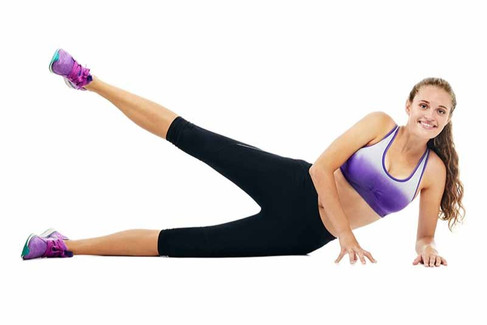Tibialis posterior tendonitis – Top treatments … and what to avoid!
- Maryke Louw
- Sep 25, 2023
- 14 min read
Updated: Mar 12
Tibialis posterior tendonitis (also known as posterior tibial tendonitis) is, in my experience, one of the trickier tendon injuries to treat. This article explains what causes tibialis posterior tendonitis, how to figure out whether your foot pain is indeed caused by this injury, and the best treatment approach for it. Remember, if you need more help with an injury, you're welcome to consult one of our physios online via video call.

This article contains affiliate links. We might earn a small commission on sales at no extra cost to you.
The terms tendinitis, tendonitis, tendinosis, and tendinopathy mean the same thing for all practical purposes, and we use these interchangeably in most of our articles.
In this article:
I also made a video that focuses specifically on the diagnosis and treatment of tibialis posterior tendonitis:
Tibialis posterior tendon anatomy
The tibialis posterior (tib post) muscle sits deep inside your calf, and the tib post tendon runs from this muscle down the inside of your ankle (behind the ankle bone) and attaches to the navicular bone on the inside of your foot as well as to several other bones underneath your foot.

The main jobs of the muscle and the tendon are to support your foot arch so that it doesn’t collapse and to prevent your foot from tilting inwards (pronating) too much when you run or walk.
In addition to this supportive role, they also help to point your foot downwards (plantar flexion) and then tilting it outwards (so that the sole of your foot points inwards, i.e. supination). We’ll get back to these movements later on when we discuss rehab exercises.

Posterior tibial tendonitis causes
The main injuring movement is when the foot tilts inwards (pronates) excessively – either too quickly and forcefully in one single incident, or too many times repeatedly. Pronation is part of the normal gait cycle (how we run and walk), so we’re talking about excessive pronation here.
Excessive pronation forces the tib post tendon to work a lot harder than it normally does and also compresses it too tightly against the foot bones that it wraps around, and this then injures it.
Below are some of the more common activities and situations that can cause your foot to pronate excessively. There are also some related tips on how to prevent tibialis posterior tendonitis in the first place.
1. Poor stability
This can be due to weakness in the foot muscles, but also in the leg muscles, right up to the glutes.
The glutes come into play when they cannot keep your knees aligned properly when you walk or run; so, when your knee turns inwards excessively each time you take a step, this causes the lower leg to tilt inwards, which causes over-pronation.

How to fix this: Do exercises that strengthen your feet as well as the rest of your legs (more on this later).
2. Flexible feet in unsupportive shoes
People with rigid feet can usually get away with wearing very flexible shoes (e.g. with memory foam or wobbly, soft foam soles) or flat shoes (like flip-flops) that offer little support, but if your feet are quite flexible (like mine), shoes that are too flexible or offer no support can cause you to over-pronate.

What shoes are best for very flexible feet? Supportive walking or running shoes that lace up and don't make you wobble when you wear them. Asics and Hoka are two brands that are good, but you can also test your shoe by twisting it (like wringing water out of a towel) – if you can twist it nearly all the way around it is too flexible. As for sandals, Fit Flops, Megnya, and Powerstep are among the brands that make sandals with arch support.
3. Poor form going down hills
If you’re not used to walking or running downhill and overdo it, or you do it towards the end of a long run when you’re tired and can’t maintain good running form, it can cause your feet to pronate excessively.

Top prevention tip: Try to keep your steps light when you walk or run down hills. The harder you plonk your feet down, the more force goes through your body, potentially increasing pronation. If you're really tired on a run and have to go down a steep incline, rather walk
4. Running or walking on a camber for too long
The foot at the higher end of a camber has to pronate more than usual to accommodate the angle of the surface you’re running or walking on.
Top tip: If possible, vary the camber or avoid it during your walk or run. For example, on an out-and-back run, run back on the same side of the road that you did the out part.
5. Having a stiff ankle joint or tight calves
If your lower leg can’t tilt forwards far enough on your foot (dorsiflex) to accommodate your walking or running strides, your foot has to pronate more to compensate for this lack of flexibility as you push off.
This may happen if you have very tight calves, or some people’s ankle bones are simply shaped in a way that limits their dorsiflexion.

Top tip for tight calves: If your calves are the problem, doing calf stretches may help. But please don't do these while your tib post tendon is injured, as it usually makes it worse (see below).

Top tip for stiff ankle joints: If you have a high foot arch and your foot bones are restricting your movement, wearing a shoe with a higher heel-to-toe drop can help; the angle reduces the amount of dorsiflexion necessary for walking or running.
Posterior tibial tendonitis symptoms and tests
What tib post tendonitis feels like
Tib post tendonitis usually causes pain around the inside of the foot and ankle, but in severe cases it can also cause an intense ache or burn a bit higher up the ankle. It may also cause swelling over the inner side of the ankle and foot.

The pain typically sets in gradually over the course of a day or a training session. Sometimes you may not notice it at the time, but wake up with pain the morning after an activity.
If your injury started with you feeling a sudden pain when you took a step, or if you felt something snap, you may have torn your tib post tendon and need to get it checked immediately.
Things that can increase the pain from tibialis posterior tendonitis include:
Standing for long periods.
Walking long distances. Although, if your tendon is very irritated, walking short distances may also hurt.
Running or jumping will likely hurt. Often, the pain is most pronounced at the start of a run or training session, then it eases off as the tendon warms up, but returns worse than before towards the end of the session or several hours after. In severe cases, the pain may be present throughout the training session or even stop you from running and jumping.
Walking or running in unsupportive shoes is usually worse.
Wearing shoes or insoles that press directly onto the tib post tendon can irritate it.
Calf stretches may feel good in the moment, but usually causes increased pain later because the calf stretch position also causes your tib post tendon to pull tight and compress around your ankle bones.
Walking either uphill (because it stretches the tendon) or downhill (because it increases the work on the tendon) may hurt.
Walking with the injured foot at the bottom of a camber may reduce your pain, whilst walking with it on the top usually increases it.

Posterior tibial tendonitis tests
Your physiotherapist will likely use the following tests to check whether you have posterior tibial tendonitis:
Pressing on the tendon – The pain has to be located on the tib post tendon. If this is not the case, you likely have a different injury. We guide our online patients on how to do this themselves during our video consultations.
Stretching the tendon – An injured tib post tendon usually hurts when you stretch it. You can stretch the tendon through movements that combine dorsiflexion (pulling toes up to the shin) with pronation (turning the foot in). If your tendon isn’t very irritated, this test may not hurt.
Working the tendon – Forcing the tib post tendon to work when it is injured usually also reproduces the pain. If your tendon is very irritated, even light work (like when it helps you balance on one leg) may make it hurt. If your tendon is less irritated, your physio may have to test it through more loaded exercises (like calf raises or hopping). Your physio will select the best movement test depending on the rest of the information they gather during your consultation.
Scans – Most cases can be diagnosed without scans. However, a scan is needed if your physiotherapist suspects a more serious injury, your symptoms don’t fit the typical pattern for tibialis posterior tendonitis, or you’re not recovering as expected. MRI or ultrasound scans are best. X-rays do not show tendons, but may be appropriate if your physio suspects that you may also have injured a bone.
Posterior tibial tendonitis treatment
First, we’ll look at ways to give your injured posterior tibial tendon a break to allow the pain to calm down, and then we’ll look at exercises to strengthen the tendon back up to its former state as well as strengthening exercises for other muscles to avoid injuring the tendon again.
How to reduce posterior tibial tendonitis pain
Limit the time you spend on your feet
We’re not even talking about running or other sports in the initial stages of recovery – it’s all about giving your injured tendon a break by paying attention to things like standing and walking.
Our patients often find that standing for prolonged periods of time really aggravates this injury – often more so than walking or gentle jogging! Remember that the tib post tendon’s main function is to support your foot arch, so it works non-stop when you’re standing. So, at every opportunity, sit down rather than stand. At work, look at what tasks you can do sitting down, or maybe perched on a high chair or barstool.

When I had posterior tibial tendonitis in both feet, I was working a 12-hour shift on Thursdays. I would get my tendons to calm down through the week, and then that one shift would set them back so far that I realised I needed to do something. There were types of treatment that I didn't have to do standing up, so I would administer them sitting down. Every time I had to chat to a colleague, I would perch on something. If I found myself waiting for the bus, I would sit down, and if I couldn't sit down, I would try and lean on my arms to take some weight off my feet.
Measures like these are just temporary, to allow your tendon pain to calm down. You’ll be able to gradually revert to standing as much as you like once your tendon has recovered. And in the meantime you can still do things like swimming and cycling.
Get orthotics that support your foot arches
Like limiting time on your feet, orthotics (insoles) that support your foot arches give your injured tib post tendon(s) a bit of a rest so that they can recover. It’s like a little mini-crutch in your shoe.

You can have orthotics made for you by a podiatrist, and this may be advisable if you have very flat feet, but most of our patients do just fine with off-the-shelf orthotics. Don’t get ones that are too hard or with very high arches, because they will press on the tendon and aggravate it further.
People with normal foot arches should be able to wean themselves off their orthotics eventually, but if, like me, you have very flexible/flat feet, it may be a good idea to wear them even after you’ve recovered from your injury.
These orthotics, available on Amazon, would work well for supporting your foot arches:
Correct shoes for posterior tibial tendonitis
Good shoes go hand-in-hand with orthotics.
Shoes that are too flexible won’t give your foot enough support, which means that your injured tendon will have to work harder.
However, don’t tie your shoes too tightly in an effort to increase the support for your feet; the shoes may press on the tendon and aggravate it further.
Here are examples from Amazon of supportive shoes that work well for standing, walking and running:
So, see if you can get away with wearing shoes that's supportive but don't cause too much pressure over that area. At the beginning, you may find that it helps to tie your shoes really loosely. Later on, of course, you need to tie them properly so that you can get the necessary support.
If any type of closed shoe hurts, then a sandal with arch support may help. Here are some examples from Amazon:
Stretches – be careful!
Injured tendons tend to feel stiff at times – this is due to excess fluid build-up inside the tendon.
In the case of posterior tibial tendonitis, you will probably feel the stiffness in your calf and inner ankle, and some treatment programmes prescribe calf stretches and even soleus stretches that you do with a bent knee.
I want you to be careful with these, especially if you've got a fresh injury and have just aggravated your tib post tendon.
Any stretches where your foot moves closer to your shin (like with calf stretches) cause the tib post tendon to compress tightly onto the bones of the ankle and foot. More often than not, I have found that patients actually flare themselves up with those at the beginning.

If you've had your tendon pain for a while and you want to try some gentle stretches, go for it, but don't stretch it too hard at the beginning. Ease into it, and check how your tendon reacts in the next 24 hours, because tendons often only tell you the next morning that you've overdone it.
Massage for posterior tibial tendonitis
For dealing with stiffness, massage or foam rolling are safer options than stretching.
However, don’t massage directly on the painful tendon, even though it may feel good in the short term. Again, compression on the injured tendon usually makes it worse. Rather massage your calf muscles and avoid the painful areas, using a massage ball or foam roller.
Posterior tibial tendonitis taping
The purpose of the taping is to stop over-pronation. This can be especially useful if you want to ease back into running and you’re not sure whether your recovering or recovered tendon is ready to handle it.
A show-and-tell video is more useful for demonstrating how the taping is done, and my colleague Steph Davies has made an excellent video about this. You should remove the tape immediately if your skin has an allergic reaction (red, itchy, or blisters) to it.
Posterior tibial tendonitis exercises
None of the treatment options above, on its own or in combination, will get your tendon to recover totally. All tendons and tendinopathies need to be strengthened up afterwards to regain their full strength.
The tib post tendon can be quite fickle when you try to strengthen it. We usually ask our patients to avoid exercises that target the tib post muscles and tendon until the injury has calmed down quite significantly.
But while the tendon calms down, it is possible to get going with some exercises to strengthen other muscles. Strengthening the muscles around your ankle and foot has been shown to help people recover from tib post tendinopathy, but you must also strengthen the rest of your leg.
Weak glute and core muscles can cause your leg to turn in when you run and walk, placing extra strain on your tib post muscle and tendon.
Exercises that strengthen the tibialis posterior muscle and tendon
Once your tib post tendon has calmed down somewhat, it is advisable to start off with an isometric exercise – which means that the foot and ankle don’t move – using an elastic exercise band. Keeping the foot in a neutral position avoids compressing the tendon, which may still be quite sensitive at this stage, against the foot bones.
I demonstrate this isometric exercise in this video:
When your tendon has calmed down some more, you can progress to doing the exercise with the full range of motion of your ankle and foot, i.e. pulling on the exercise band by moving your ankle and foot. Your physio will guide you on when you're ready to start these.
Some exercise bands available on Amazon:
Or you can go to the TheraBand Store for more options.
Exercises that strengthen other muscles
You should be able to start with these exercises even while your injured tib post tendon is recovering from the worst of the pain. They help reduce the strain on the tib post tendon by improving the strength and control around your hips and core.
Choose exercises that you can do lying down or sitting, e.g.:
Clams
Side leg lifts
Bridges
Crunches
Russian twist
Cross-training options
If you can’t run while you recover from your tib post tendonitis, there are other ways to keep fit.
Swimming is usually a good option – kicking off the wall can sometimes hurt, so avoid that.
Riding a bike with posterior tibial tendonitis can sometimes irritate the tendon more because of the position of your foot on the pedal (dorsiflexion). But this is not true for everyone, so test a gentle bike ride and observe how your tendon responds in the 24 hours after the ride.

Last-resort treatment options
Sometimes, even when our patients are really good and follow the treatment recommendations above, their tib post tendonitis still doesn’t want to get better.
In such cases, I would say people should seriously consider investing in going to see a sports physician. Why a sports physician and not a GP? Because sports physicians specialise in sports injuries, including tendon problems.

They can usually do an ultrasound scan there and then to see what’s going on. And that's important, because other things can feel like a tib post tendinopathy and then actually not be it. For instance, you can have a tear in your tendon, which can feel very similar, but it will need a different approach.
They also have quite a variety of other types of treatment they can add for you.
Some patients react really well to shockwave therapy to calm the tendon pain down and allow them to resume their rehab exercises.

For others, an injection may be useful. Now, we don't want cortisone near tendons, but sometimes the tendon sheath is inflamed or there are bursas involved, and they can tell that with ultrasound.
In extreme cases I have seen people have cortisone injections for this; you just have to treat it very carefully afterwards – they’re usually immobilised in a boot for ten days or so to protect that tendon. And then, very slow-level rehab after that.
But note that none of these treatments will heal your tendon; they may only reduce the pain. Afterwards, you will still have to do the strength exercises. So you may as well give the pain management methods and exercises I described earlier a proper go before considering any of these treatments.
Posterior tibial tendonitis recovery time
In our experience, recovery times for tibialis posterior tendonitis depend on:
For how long your tendon has been painful before you started with the correct treatments.
What type of sport or activity you want to get back to – it takes longer to get back to high-impact sports that involve running and jumping.
Other factors, like the menopause and being older can also increase recovery times.
In most cases, you can expect the following recovery times:
8 to 12 weeks if your tendon pain only started in the last couple of weeks and you’re able to rest it and apply the correct treatments immediately,
4 to 9 months if you’ve had your pain for more than a month before starting the correct treatment,
more than 12 months if you’ve had your pain for several months.
How we can help
Need more help with your injury? You’re welcome to consult one of the team at SIP online via video call for an assessment of your injury and a tailored treatment plan.

We're all UK Chartered Physiotherapists with Master’s Degrees related to Sports & Exercise Medicine. But at Sports Injury Physio we don't just value qualifications; all of us also have a wealth of experience working with athletes across a broad variety of sports, ranging from recreationally active people to professional athletes. You can meet the team here.

About the Author
Maryke Louw is a chartered physiotherapist with more than 20 years' experience and a Master’s Degree in Sports Injury Management. Follow her on LinkedIn and ResearchGate.











































